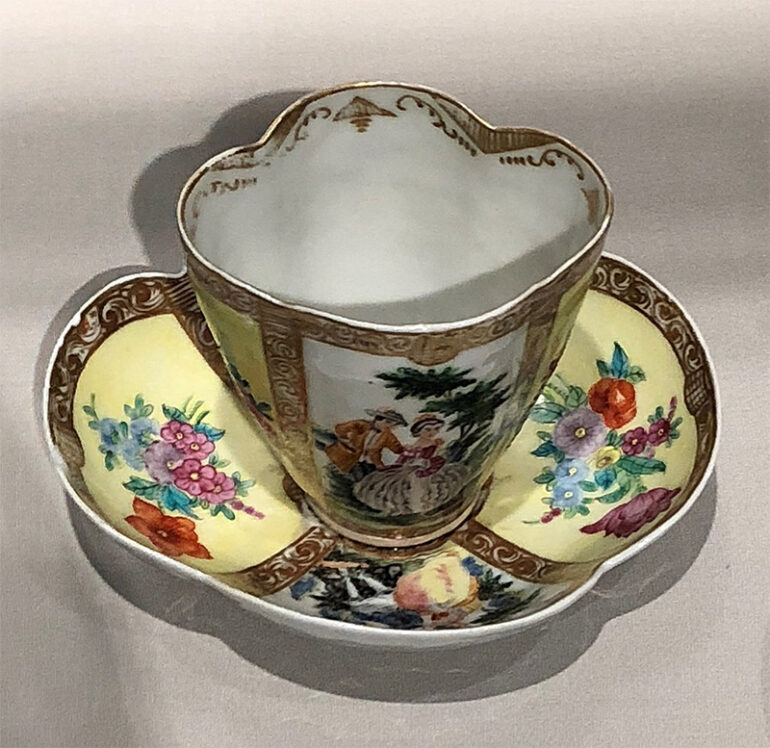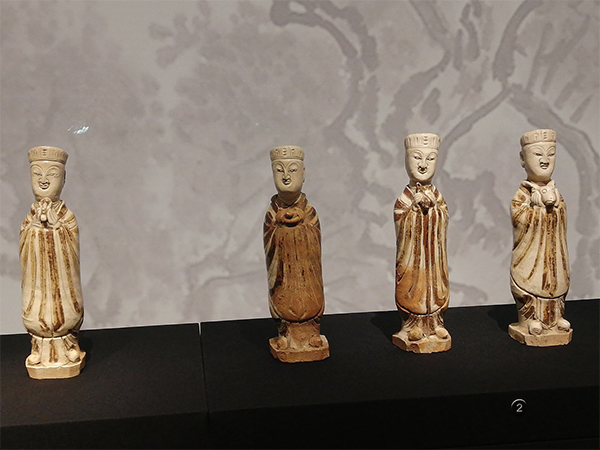Chinese porcelain has captivated collectors, nobility, and even emperors for millennia. Chinese porcelain, which dates back to the 2nd century AD Eastern Han Dynasty, became famous worldwide for its exquisite workmanship and gracefulness. Chinese porcelain has evolved over many generations, creating a stunning blend of aesthetics and durability that captivates the world. Chinese porcelain reflects its rich culture. Its intricate designs and significant motifs symbolize Chinese ideals and ideas. This ageless art form honors tradition and emits a timeless charm.
Origins and Early History
Chinese porcelain has endured for generations. Its roots are in the 2nd-century AD Eastern Han Dynasty. Chinese pottery’s exquisite workmanship and graceful grace captivated the world, winning over emperors, aristocrats, and enthusiasts. These early works’ superb craftsmanship and meticulousness established Chinese ceramics’ enduring reputation as an icon of refinement and civilization. Chinese porcelain has evolved over decades, renewing itself with elegance and resilience that captivates people worldwide.
Techniques and Materials
The durability of Chinese ceramics is a result of the careful artistry and the employment of top-notch resources. Talented craftsmen utilize a range of methods to produce these stunning works, guaranteeing their long-lasting quality and sophistication. An effective method involves utilizing various coats of glaze, which not only amplifies the aesthetic allure but also provides a safeguarding layer. Furthermore, the inclusion of kaolin clay, renowned for its exceptional quality and durability, plays a significant role in enhancing the robustness of Chinese porcelain. The exquisite methods and the thoughtful choice of resources have been inherited over many years, leading to the everlasting charm and lasting quality of Chinese ceramics.
Symbolism and Cultural Significance
The historical significance and cultural symbolism of Chinese porcelain have stood the test of time, captivating generations for centuries. Every elaborate pattern and symbol narrates a tale, mirroring the principles and convictions of Chinese culture. In various cultures, the dragon is often associated with notions of might, resilience, and favorable circumstances, whereas the phoenix embodies elegance, charm, and abundance. The carefully crafted symbols adorning delicate porcelain vessels not only added aesthetic appeal, but also communicated one’s societal standing and expressed hopeful aspirations. Chinese porcelain is a true testament to the skillful artistry and meticulousness that reflects a profound respect for customs and an everlasting grace that has mesmerized enthusiasts across the globe.
Preservation and Continuation
The enduring legacy of Chinese porcelain craftsmanship serves as a powerful testament to the profound cultural value associated with this exquisite form of artistic expression. Throughout the ages, a meticulous set of methods has been transmitted from one generation to the next, guaranteeing the enduring nature of this remarkable custom. Craftsmen spend countless hours perfecting the intricate craft of creating porcelain, refining their abilities in molding, coating, and heating. With unwavering determination, they protect the heritage of Chinese porcelain, guaranteeing that its ageless grace persists for forthcoming eras to admire and treasure. By continuously preserving the art of Chinese porcelain, not only is the rich history being respected, but it also cultivates a deep sense of cultural admiration. The mesmerizing beauty of Chinese porcelain continues to captivate and ignite inspiration among global audiences.
The ancient history of Chinese pottery shows the incredible workmanship, exact processes, and profound meaning that have captivated fans. Since the Eastern Han Dynasty, Chinese porcelain has symbolized sophistication, grace, and cultural significance. It retains these features today. The dedication of great craftsmen in preserving and passing this heritage ensures that future generations will recognize the timeless beauty and durability of Chinese ceramics, fostering cultural appreciation worldwide.
Photo Attribution:
1st & featured image by https://commons.wikimedia.org/wiki/Category:Porcelain_of_China#/media/File:China_18th_century_porcelain_copy_of_german_meissen_style_IMG_9428_Museum_of_Asian_Civilisation.jpg 2nd image by https://commons.wikimedia.org/wiki/Category:Porcelain_of_China_by_museum#/media/File:%E5%AE%8B%E4%BB%A3%E5%BD%A9%E7%BB%98%E6%8D%A7%E5%8D%81%E4%BA%8C%E7%94%9F%E8%82%96%E4%BA%BA%E7%89%A9%E4%BF%91.jpg

